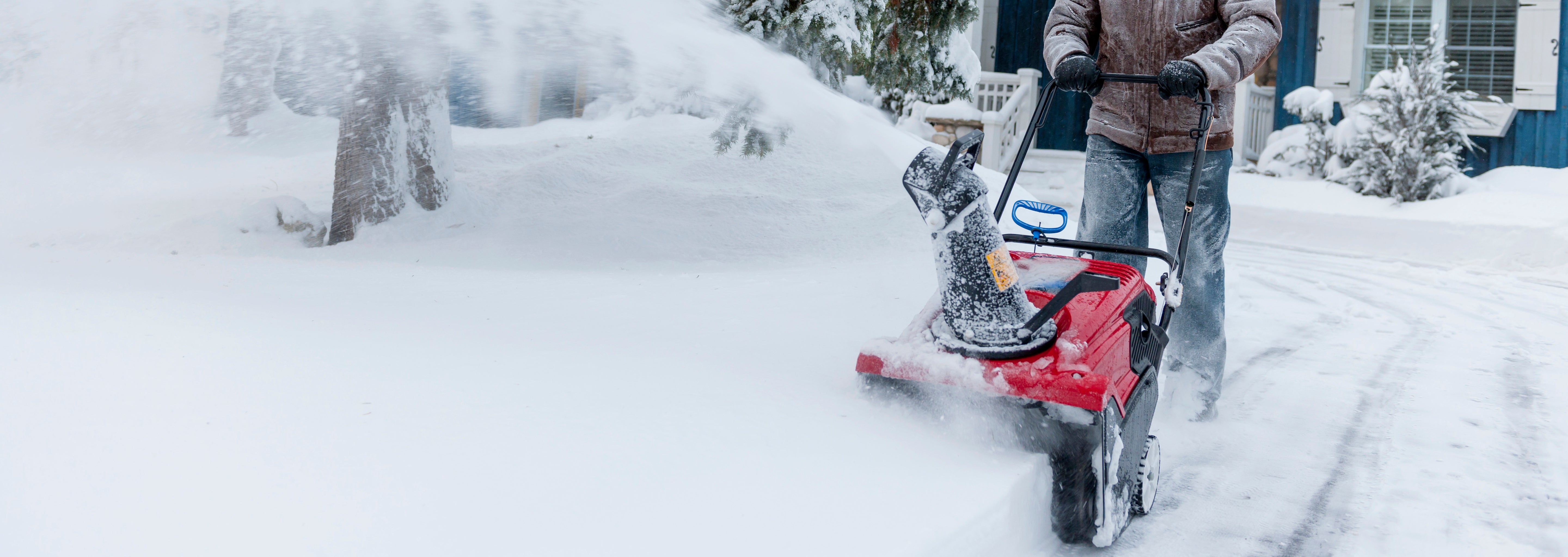Every year, thousands of people injure themselves while shoveling snow out of their driveways, and a large portion of those injuries are sustained on the back. The constant bending over, raising and lowering of the spine, and the effects of cold weather on your muscles all contribute to winter back injuries. Additionally, lack of proper snow shoveling technique, sudden activity after a routinely sedentary lifestyle, and use of less-than-optimal shovels all make back problems worse.
What Are The Most Common Types of Winter Back Problems?
While shoveling snow can lead to many kinds of back problems, these four are the most common:
1. Lower back pain and strain
How it happens: Poor posture during shoveling, where the back is rounded when going down for the next load of snow, is a key cause of lower back pain. This posture minimizes the use of your stronger "spinal erector" muscles and puts the pressure on weaker "stabilizer" muscles, and over-stretches your spine's supporting ligaments.
How to prevent it: Instead of lifting snow, use the shovel to push it to the side whenever possible. But if you have to lift a shovel full of snow, squatting with and lifting from your knees will decrease the stress on your back. Keep the shovel near your body and move to the edge of the driveway instead of hurling the snow.
2. Herniated discs
How it happens: A herniated, or "slipped," disc occurs whenever a soft, inter-vertebral disc moves out of position and presses or pinches up against a nerve. The major cause of herniating a disc while shoveling snow is rotating or twisting the back instead of making straight up and down motions. And the heavier the snow load, the greater the chances of an injury.
How to prevent it: Always face your hips and shoulders towards the object you intend to lift. Avoid twisting your back to move the snow to its new location: instead, pivot your whole body to face the new direction. For a minor investment, you can buy an ergonomically designed shovel that uses a bent handle to de-stress your back. This type of shovel also prevents your needing to bend as far. Look for an adjustable handle and lightweight material as well.
3. Muscular back pain
How it happens: Although muscular back pain overlaps with lower back pain and can come in tandem with disc herniation, it can apply to many back muscles. Cold outdoor temperatures can slow blood circulation and make muscles more likely to cramp, over-tire, or experience spasms.
How to prevent it: Warm up with exercises and stretches before going outdoors to shovel snow. Also, warm up in a well-heated home and be sure to eat a hot breakfast. And again: too much bending and twisting will make the condition more severe.
4. Fractures, bruising, and torn tendons/ligaments
How it happens: You can also injure your back by slipping and falling on concrete (or other hard surfaces) while shoveling snow. This can lead to a broken back, where vertebrae are actually fractured. It can also dislocate vertebrae and tear at tendons and ligaments. Additionally, bones can actually be "bruised" upon impact, causing much pain and a long-term "bad back." Injury of the coccyx, or "tail bone," is especially common during a fall since it is at the end of the vertebral column. Such an injury is serious, and you should not delay to get immediate medical attention should it occur.
How to prevent it: Make sure to wear shoes or boots with good treads to minimize injuries from slipping. Spreading a traction-enhancing substance like sand, rock salt, or kitty litter on your sidewalk or driveway will also reduce the likelihood of slipping on the ice while you shovel.
No-one really enjoys shoveling snow. But if you follow our safety tips above, at least you’ll be shoveling smart.


